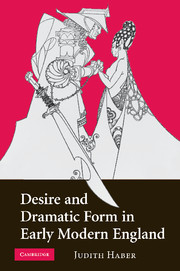Book contents
- Frontmatter
- Contents
- Acknowledgments
- Textual note
- Introduction: consummate play
- Part I “COME … AND PLAY”: CHRISTOPHER MARLOWE, BESIDE THE POINT
- 1 Genre, gender, and sexuality in “The Passionate Shepherd” and Tamburlaine
- 2 Submitting to history: Edward II
- 3 “True-loves blood”: narrative and desire in Hero and Leander
- 4 “Thus with a kiss”: a Shakespearean interlude
- Part II DESIRING WOMEN IN THE SEVENTEENTH CENTURY
- Afterword: for(e)play
- Notes
- List of Works cited
- Index
1 - Genre, gender, and sexuality in “The Passionate Shepherd” and Tamburlaine
Published online by Cambridge University Press: 02 July 2009
- Frontmatter
- Contents
- Acknowledgments
- Textual note
- Introduction: consummate play
- Part I “COME … AND PLAY”: CHRISTOPHER MARLOWE, BESIDE THE POINT
- 1 Genre, gender, and sexuality in “The Passionate Shepherd” and Tamburlaine
- 2 Submitting to history: Edward II
- 3 “True-loves blood”: narrative and desire in Hero and Leander
- 4 “Thus with a kiss”: a Shakespearean interlude
- Part II DESIRING WOMEN IN THE SEVENTEENTH CENTURY
- Afterword: for(e)play
- Notes
- List of Works cited
- Index
Summary
Criticism of Christopher Marlowe has frequently acknowledged that there exists a tension between lyric and narrative modes throughout his corpus – and readers have sometimes connected this to the sexual tensions contained therein. Too often, however, as Diana Henderson has pointed out, they have tended unthinkingly to privilege narrative, viewing it as more expressive of “reality.” While such a valuation may well reflect the judgment of certain segments of Marlowe's culture (and certainly reflects the dominant judgment of our own), it does not do justice to Marlowe's complex deployment of the tension between genres. In all of his works, there exists a clear relation between conventional, causal narrative structure, which is productive of meaning, and other forms of orthodoxy, particularly conventional reproductive sexuality. And pace the current tendency automatically to associate an interest in the aesthetic with an investment in the status quo, for Marlowe, “pointless” aestheticism and “pure” lyric (insofar as they can be imagined) offer means of thinking outside the constructions of his culture, of evading, if never wholly avoiding, their seemingly immutable truths. Careful examination of his plays and poems can therefore help us to rethink and complicate prevailing assumptions about both literature and criticism. I would like to begin this examination by looking briefly at his lone lyric, “The Passionate Shepherd to His Love”; I will then explore the force – and the sexual politics – of lyric and dramatic narrative in Tamburlaine.
- Type
- Chapter
- Information
- Desire and Dramatic Form in Early Modern England , pp. 13 - 26Publisher: Cambridge University PressPrint publication year: 2009



